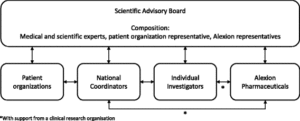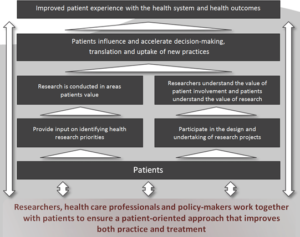Patient engagement in research is a developing issue. For it to be successful there needs to be a mutual appreciation of the value that can be added by including patients in research study groups.
The aHUS alliance embedded patient engagement in research in its mission statement by agreeing that” affiliates will collaborate to work with international aHUS researchers “
The first opportunity to begin to fulfill that mission was becoming involved with the Global aHUS Registry. Among its roles as part to the Scientific Advisory Board of the Registry was able to describe an agenda for research envisaged by patients. The way this was done and the outcome from doing it was published in the Orphanet Journal of Rare Diseases in November 2016 ( click here to download a copy).
That first ” aHUS patients’ research agenda” has been added to as a result of responses to the alliance’s 2016 aHUS Poll. A list of research topics suggested by patients/carers was published in a document in the website’s Info Centre.( click here and see Chart 6) .
Now further questions about aHUS are being sought as part of the Rare Disease Day 2017 video project. So by 28 February 2017 aHUS patients will have from these three sources a comprehensive patient generated research agenda.
What happens then?
Having an agenda is the first step and by most rare disease standards the aHUS Community will have done something truly remarkable.
As can be seen from the published article about the alliance’s participation ,The aHUS Registry has adopted a “dialogue model” to turn the patients agenda into research projects included in its programme of research work, and some of these have begun, including one about the timing of aHUS onset which to be investigated by a group of patients themselves.
The aHUS Registry patient engagement has another level to it as described in this illustration below’

The affiliated patient organisations not only have a direct relationship with the SAB but also to the aHUS Registry National Coordinators who over see Registry Management within each country. The National Coordinators are eminent researchers in their own right, and have links with other aHUS research investigators within their country. National aHUS investigators have their own networks to which patient research priorities can be communicated. This is only just beginning to happen and more impetus is needed to get greater patient engagement; but having a patient research agenda in the public domain is a key way to begin participation.
The aHUS alliance participated in the KDIGO aHUS Conference in 2015 and provided input to its outcome. The alliance was fully supportive of the need to develop more understanding and find more answers for those aHUS patients affected by “secondary ” versions of the disease, which includes pregnancy associated aHUS.
As far as other international research networks are concerned there is more work to be done so that the patient community is fully engaged.
A model designed by the Canadian Institute of Health Research in an article about patient engagement perhaps best describes the extent and direction of the “more work to be done”. ( click here to see a copy )

The model shows that for there to be a partnership researchers healthcare professionals and policy makers need to work together with patients . So to a large extent that depends on each of those stakeholders approaching known patient groups at national or international levels with a proposal. It also depends on the public patient advocacy groups having the willingness and capability to engage and a preparedness to raise their game to meet the challenge.
In 2017 the aHUS patient community will have established its own stated patient research agenda. Where that leads only time will tell, but along the way the aHUS alliance will not only be monitoring and reporting on the aHUS knowledge gaps as they close ; but also pursuing its mission to work with international aHUS researchers.

